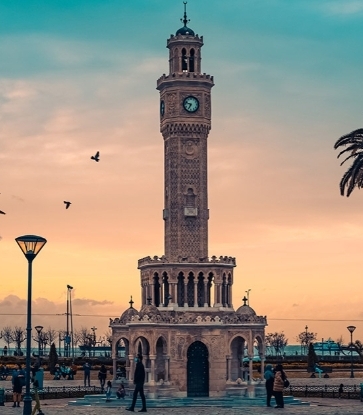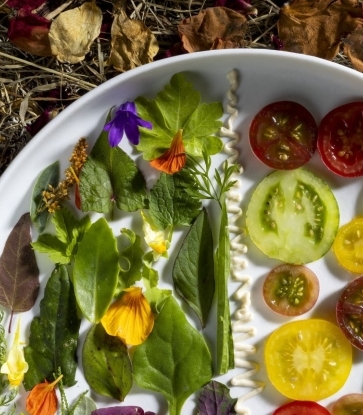In Saudi Arabia, bread is more than a staple: it’s a ritual, a memory, and a symbol of connection. Across the Kingdom, from the mountains of Taif to the palm groves of Al Ahsa, traditional breads are shaped not only by ingredients but by the moments they accompany, the methods that preserve them, and the meanings they carry “Bread has changed a lot over time,” says Chef Clint Montano of Bib Gourmand Joontos. “But to have a bread with a good quality, the base is the same and the recipes always stay forever.”
In Saudi dialect bread is known as eish, which means life. “We call it ‘eish’ because it’s the essence of life on the table,” say Chef Hakim Bagabas of MICHELIN-selected Yaza.
This is not just an introduction to Saudi breads, it’s a journey through the Kingdom’s soul, told in flour, fire, and family.
NEW: Discover the first-ever selection of the MICHELIN Guide Saudi Arabia

Occasions: Bread at the Heart of Gatherings
Bread in Saudi Arabia is inseparable from the rhythm of daily life and the pulse of celebration.As the sun sets behind the Prophet’s Mosque in the holy city of Madinah, the scent of fatoot - a simple, yeastless flatbread – mingles with dukkah (a blend of spices) and yogurt. Volunteers hand it out to pilgrims breaking their fast, turning a humble bread into a sacred offering. It’s the first taste of Madinah for many, and a comforting echo of home for others.
During Eid and weddings, kleija takes center stage. A bread originating from Al Qassim, these spiced, filled pastries are lovingly shaped and patterned, filled with dates or nuts, and brushed with saffron or rose water. Kleija is not just dessert; it’s a gift, a gesture of welcome, and a symbol of joy.
In Al Ahsa, khubz al ahmar, meaning ‘red bread,’ is served with honey, ghee, or vegetables, its sweetness drawn from dates kneaded into the dough. In Taif, khubz al mallah is paired with cheese and honey in the morning, or meat and ghee later in the day, each bite steeped in tradition.

Main Process: Earth, Fire, and Craftsmanship
Saudi breads are shaped by ancient techniques that reflect the land and its resources.In Al Ahsa, khubz al ahmar is baked in clay ovens lined with palm trunks. “The clay oven is what gives Saudi breads a flavor like no other,” iterates Chef Samer Abdullah Al-Hajj Mahyoub of Bib Gourmand Mirzam. The smoky aroma that fills the air is as much a part of the bread as the dates and spices within it. This method links the bread to the region’s agricultural heritage and its centuries-old baking traditions. Similarly, Mirzam adopts this tradition in their kitchen for bread known as mulawah, a type of laminated dough, similar to puff pastry, traditionally made in the southern Jazan region.
SIMILAR: 7 things to see and do in Riyadh this fall
In Taif, however, khubz al mallah is baked directly on hot sand, ash, or embers – a technique known as milla. This rustic method gives the bread its distinct texture and flavor, connecting it to the mountain terrain and the resourcefulness of its people.
As for fatoot, the way to cook is quickly on a hot griddle, with no yeast and no waiting. Its simplicity is its strength, making it a versatile companion to many dishes and a reliable comfort in every home. Chef Hakim Bagabas of MICHELIN-selected Yaza modernizes this technique by using a modern Josper oven. “At Yaza, we focus on a kind of Saudi fusion,” Bagabas explains. “We innovate by blending local with international, and vice versa.”
Making kleija is an art. The dough is shaped into discs, filled, and then pressed with intricate designs before baking. Each pattern tells a story, each batch a celebration of culinary craftsmanship.

Cultural Significance: More Than Just Bread
These breads are edible expressions of Saudi identity, each one carrying the essence of its region and the values of its people. “[It] has a sense of sharing and community,” explains Montano.Whether it’s fatoot handed out during Ramadan or kleija offered to guests, bread in Saudi Arabia is a symbol of welcome. It’s how families say “you are home,” even to strangers. It is one of the many ways Saudis show their warmth and hospitality as it evokes a sense of community and sharing, which is core in their culture. “It’s something we’ve carried with us since childhood,” recalls Mahyoub.
Breads’ significance is not just something that is seen in the home, but it’s a national pride. In December 2024, khubz al ahmar, kleija, and khubz al mallah were recognized in UNESCO’s Creative Cities Network for their cultural value out of over 20 varieties of Saudi breads. These breads are not just recipes – they are traditions passed down through generations, preserved in flour and fire.
Each bread reflects its landscape. Al Ahsa’s date-rich khubz speaks of oasis abundance. Taif’s smoky mallah echoes mountain resilience. Madinah’s fatoot reflects spiritual simplicity. Al Qassim’s kleija celebrates festive warmth.

So in the Kingdom, breads are more than food. They are stories baked into daily life. They speak of land and lineage, of celebration and survival. In every loaf, there is a legacy. In every bite, a bond.
And as the Kingdom continues to share its culinary heritage with the world, these breads remain its most heartfelt ambassadors: simple, sacred, and unforgettable.













